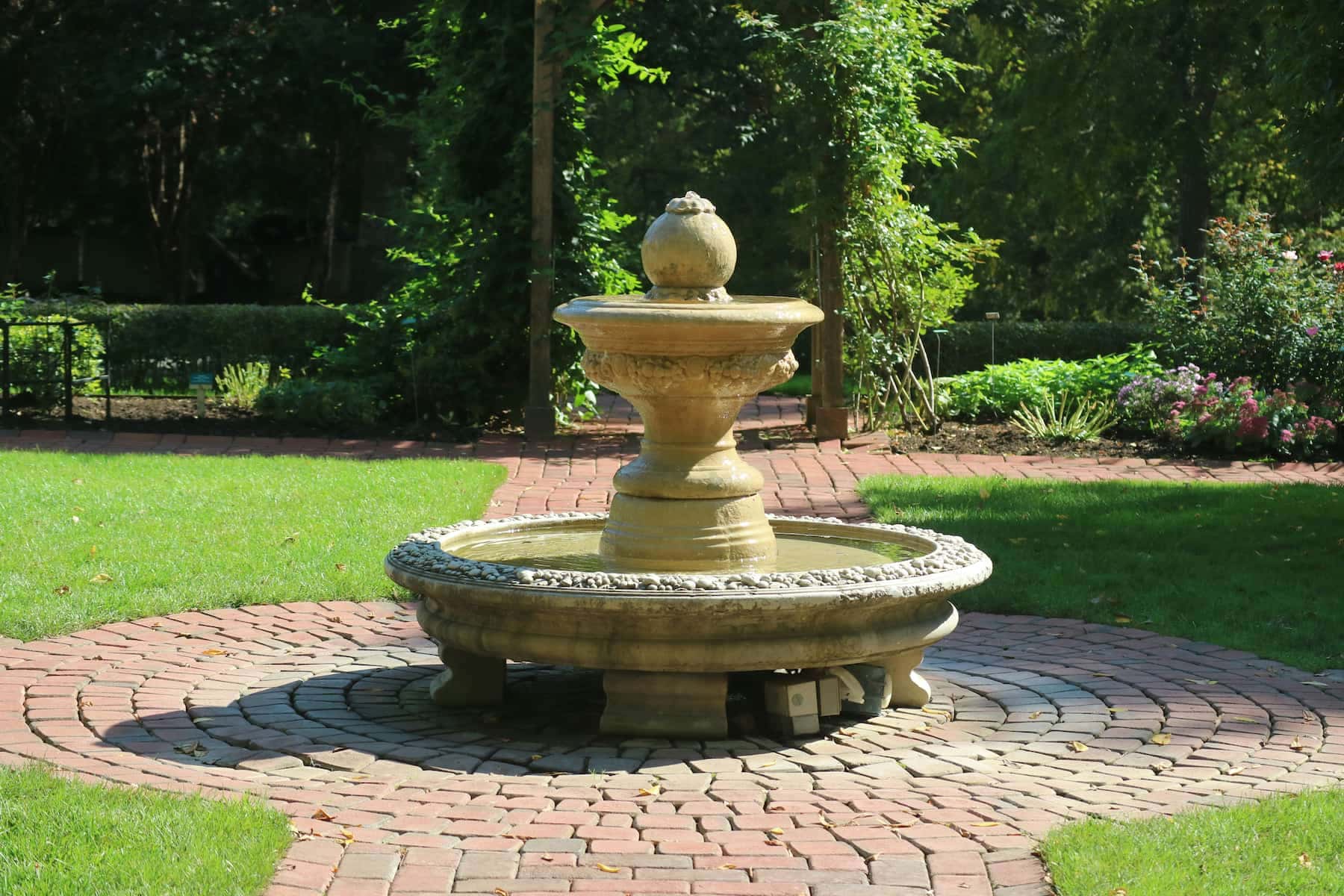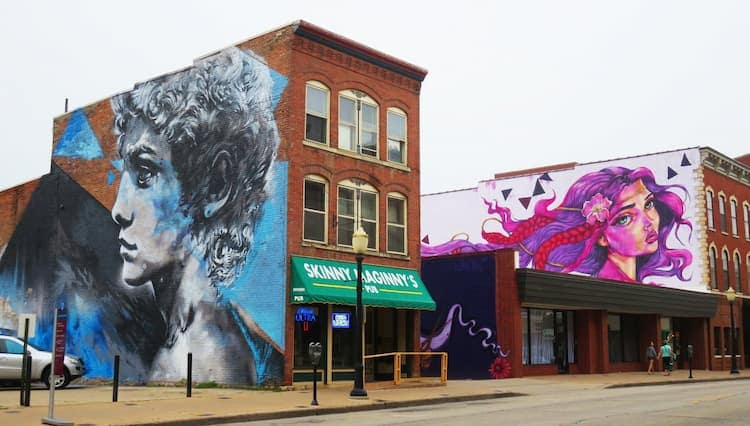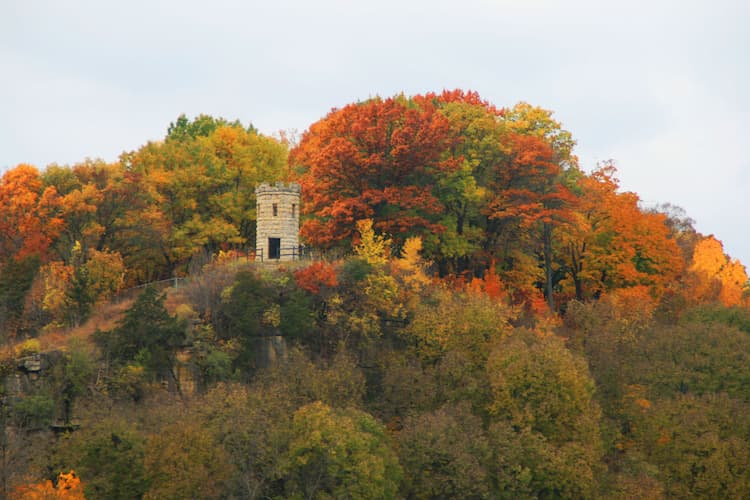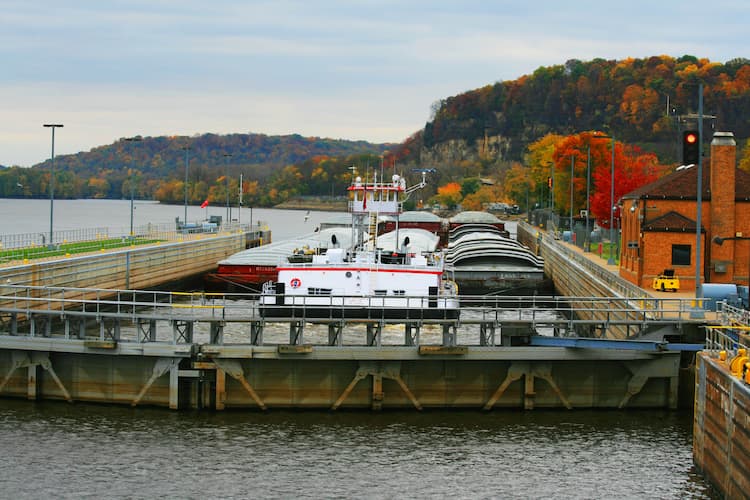
Go World Travel is reader-supported and may earn a commission from purchases made through links in this piece.
William Frederick “Buffalo Bill” Cody, the famed buffalo hunter, Indian fighter and showman, was born on February 26, 1846, on a farm in “Napsinekee Hollow” in the heart of corn country just outside of Le Claire, Iowa. I learned this on a week-end drive along the Mississippi River in Iowa.
The Great River Road National Scenic Byway runs the entire length of the mighty Mississippi, from northern Minnesota to the Gulf of Mexico. A series of state and local roads that follow the Mississippi River for 3,000 miles, The Great River Road provides a scenic overload to the senses.
Over the years my wife, Kathy, and I have traveled various stretches of the Byway with each one providing much enjoyment.
Our latest drive was along a portion of Iowa’s Great River Road. The road follows the Mississippi River along its rocky shores and sheer bluffs for 328 miles and makes up the state’s eastern border. Our drive covered a quarter of that route and took us past rolling farmland, verdant pastures and canopies of forests.
The drive is a destination in and of itself because of the incredible scenery, but the unique sights and beauty of the many charming towns from Dubuque to Le Claire proved to be a perfect weekend drive.
Julien Dubuque’s Namesake

Dubuque, the oldest city in Iowa, is carved into the limestone heights that rise above the Mississippi River. We entered from the east along the 5,760-foot-long Julien Dubuque Bridge passing over the river and into a vibrant waterfront.
Named after Julien Dubuque, the first European settler in the area, its once industrial riverfront has been reinvented, embracing the watery beauty of the river with great swaths of shuttered, stout brick-clad warehouses having been converted into retro apartments, fashionable eateries and engaging marketplaces turning a once morose landscape into an idyllic setting.
After dumping our overnight bags at the Grand Harbor Resort which sits on the Riverwalk, we wandered into the Millwork District.
Historic Millwork District

Dubuque’s Historic Millwork District was once the site of the city’s industrial heart-beat. An area with an impressive collection of multi-story, brick-clad former mills that have been reclaimed into an energetic, mixed-use neighborhood.
We stumbled upon 7 Hills Brewing Co., located within a sprawling, 10,000-square-foot warehouse. Built of red brick in 1916, it was originally a lumber warehouse that featured 20-foot ceilings. The dining area spans more than 4,500 square feet and features family-style tables that will seat up to 20 people and encourage interaction among guests.
As we delved into a platter of bar bites, it was hard not to be drawn into the lively conversations as we introduced ourselves to the communal table and toasted all with mugs of house-brewed ales.
Afterward, walking past buildings clad in colorful giant murals, we made our way to the Fenelon Place Elevator. Described as the world’s shortest, steepest scenic railway, two little rail cars run up and down 189 feet of a sheer wooded, limestone cliff. It was originally built in 1882 by a downtown banker who lived on the top of the heights in order to save an hour buggy ride round trip to work and back.
We squeezed into the compact cabin and with a pull of the cord and an initial jolt we clattered up to the top in under 3 minutes. We were rewarded with great views of the surrounding area.
The Riverwalk

Back on the riverfront, we wandered into the restored historic Star Brewery building, anchoring the north end of the City’s Riverwalk. Having produced its last sudsy brew in the 90’s, the stately brick-clad structure now houses the Stone Cliff Winery and tasting room. On weekends, live entertainment can be found on the outdoor patio. The week-end we arrived, The Irish Hooley festival was in full swing.
Nearby, the 120’ Shot Tower stands incongruously like an out-of-place stone sentinel. Built in 1856 to provide lead shots (bullets), it is one of the last remaining shot towers in the United States.
The following morning, we entered The National Mississippi River Museum and Aquarium, a Smithsonian Institution Affiliate that sits, fittingly, on the former site of the Dubuque Boat & Boiler Works.
The nearly 10-acre campus, sitting at the south end of the River Walk, tells the story of the nation’s largest river and features more than a dozen aquariums with giant catfish, sturgeon, turtles and other wildlife from the river and salt-water species from the Gulf of Mexico. Based on the young faces and hands pressed against Plexiglas windows, we were not the only ones enthralled.
Field of Dreams
South of town is the sprawling Mines of Spain Recreation Area. Located on 1,439 acres of a beautiful mixture of wooded and prairie land along 3 miles of the Mississippi River shoreline. Its 15 miles of trails provide a picturesque chance to commune with the great outdoors.
After visiting the E.B. Lyons Interpretive Center, we hiked to Julien Dubuque’s resting place and memorial which lies within the park high on a cliff facing the Mississippi River.
“If you build it, they will come”. It is one of moviedom’s iconic lines. 20 minutes outside of Dubuque, in Dyersville, we walked upon that most famous ballfield where Field of Dreams with its sturdy, white clapboard home surrounded by Iowa’s finest corn, was filmed.
Boys and girls, men and women, young and old, big and small played catch, stepped into the batter’s box or stood tall on the pitcher’s mound staring down the batter. In late summer, you can not help but wander past the outfield and into the cornfield just as Liotta’s Shoeless Joe Jackson character did in the movie.
Southbound on State Rte. 52, in the city of Bellevue, it was worth a little side trip to watch river tows and barges in action at Lock & Dam #12. The slow but rhythmic power of the waters filling the lock, raising the barges to their next level before proceeding was fascinating.
The Charms of Le Claire

Le Claire, a little community that’s a stone’s throw north of Bettendorf, clings to the bank of the Mississippi River. Its scenic downtown lies on Cody Road with its 19th-century facades housing little boutiques and specialty shops dripping with charm.
A sunny afternoon under clear skies was the perfect excuse for us to park the car and set out on foot to discover what lay behind those picturesque storefronts.
Gifts and Chocolate
The Shameless Chocoholic was serving a variety of wonderful handmade, indulgent creations. It was impossible to resist the large selection of fudge, truffles, buttercreams, toffee, caramels and more.
Grasshoppers Gift Shop is housed in an expansive century-plus old home, each room providing an eclectic variety of gifts, clothing and antiques. The basement contains the Captain’s Spirit Cellar.
There is also Bela Gift Shop, a little gem that specializes in kitchen décor. Next door, my wife found Daffodil Row, a women’s clothing boutique, inviting.
Where to Drink
Afterward, we rewarded ourselves with a cold one from Green Tree Brewing Company.
The Green Tree Brewing Co. has an outdoor deck where you can sample one of several on-tap craft brews. Sports fans can watch the game on a big screen while you munch on complimentary popcorn.
If you are more inclined to spirits, next door we found The Mississippi River Distilling Co. with handcrafted premium pours. Taking full advantage of Iowa’s #1 crop, corn, they offer a smooth bourbon and, with Illinois rye, a bold rye whiskey. While sipping the amber liquid, we learned that all their ingredients are sourced within 25 miles of the distillery.
Just down the road and on the other side of the street, we found Wide River Winery. The tasting room was more to my wife’s liking as she sampled several of their grape concoctions.
It also has an outdoor courtyard where live music can be heard on Friday nights.
Antique Archeology
If you are fond of rusty discarded scraps of Americana as I am, you’ve probably seen at least one episode of the History Channel series, “American Pickers.”
For many of us avid viewers, Antique Archeology is the altar for all things vintage. One block off of Cody Road, we found its twin buildings.
This is the original home of Mike Wolfe and his famed TV show, American Pickers. Inside a throng of antiquers admired ancient motor cycles, discarded advertising and fingered a variety of trinkets from logoed coffee cups to printed tees interspersed between the bits and pieces of rusty gold. Here and there, we even recognized some prized finds that Mike had pulled out of a dusty barn.
Dining in Iowa
Dinner that evening was at the Crane & Pelican, housed in a brick Italianate-style house built in 1851 by riverboat captain Daniel V. Dawley. Soaring windows that overlook the river provided a warm ambiance to our meals.
The salmon filet topped with toasted pecans & a blueberry compote and the comfort-pleasing roasted beef brisket with smashed potatoes open-faced on soda bread dripping gravy were our choices. With the setting sun as our backdrop, we could not have been more content.
Buffalo Bill Museum
The following morning, before leaving town, we visited The Buffalo Bill Museum and were exposed to Le Claire’s ties to Mr. Cody. Built to celebrate William F. “Buffalo Bill” Cody, its riverside location houses artifacts and memorabilia from his Wild West Show and local history including the harvesting clams from the river and how they were used to make buttons.
The museum also celebrates the city’s river heritage. Under a connected glass and steel-enclosed shelter, we clambered upon the Lone Star. The ancient mariner is the oldest surviving steam-powered towboat and the last wood-hulled boat used on the Mississippi River.
The dry-docked, 105-foot-long stern-wheeler can be fully explored and provides a historic view of working on the mighty river.
The Great River Road stretches 2,159 miles from Lake Itasca, Minn., to Venice, La. It travels through communities, small and large, that are rich in history and atmosphere.
Our trek from Dubuque to Le Claire, Iowa during a long weekend gave us a glimpse into a colorful slice of Iowa.
If You Go:
- Travel Dubuque
- Visit Le Claire
- The National Mississippi River Museum & Aquarium
- Fenelon Place Elevator Company
- Field of Dreams Movie Site
- Buffalo Bill Museum
- Crane and Pelican
- Green Tree Brewery
Read More:
Author Bio: Frank Hosek revels in traveling with his wife, Kathy. He enjoys discovering new experiences, meeting the people that make those experiences enjoyable, and sharing their adventures. He is a freelance writer for the Daily Journal and travel websites.
- Travel Guide to Colorado - April 26, 2024
- Travel Guide to Croatia - April 26, 2024
- Top 10 Things to Do in Ireland - April 25, 2024

